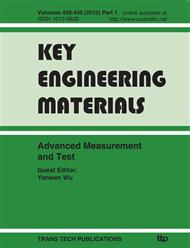p.1427
p.1432
p.1438
p.1444
p.1450
p.1456
p.1463
p.1469
p.1475
Study and Analysis of Shock Wave Propagation in Excavation Laneway during Methane Explosion
Abstract:
Coal mine can be damaged by extremely strong methane explosion, and the importance of suppressing anti-methane explosion in coal mine production safety is self-evident. The basic assumptions are used to analyze the shock wave propagation and the strength characteristics during methane explosion. The expressions among parameters in wave-front are derived during strong and weak shock wave propagation. Meanwhile, the cylinder shock wave overpressure parameter while propagating and attenuating with distance is deduced. In a certain distance away from the source location of explosion, the overpressure are basically in inverse proportion to the square root of the distance and laneway section, and is proportional to the square root of the amount of pure methane involved in the explosion. Through comparison and analysis of theoretical calculations and numerical simulation data, the data are almost identical.
Info:
Periodical:
Pages:
1450-1455
Citation:
Online since:
June 2010
Authors:
Keywords:
Price:
Сopyright:
© 2010 Trans Tech Publications Ltd. All Rights Reserved
Share:
Citation:


